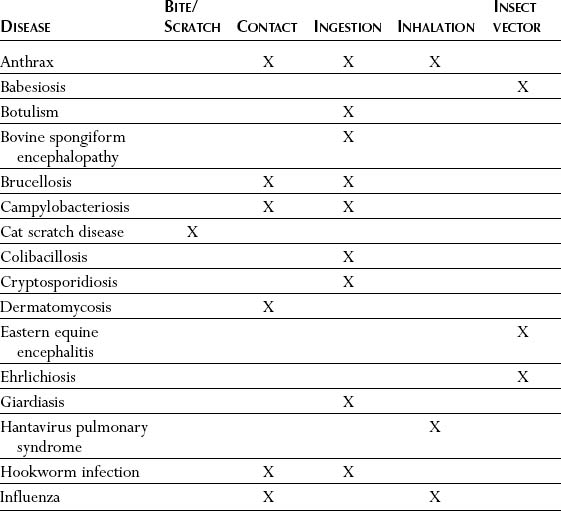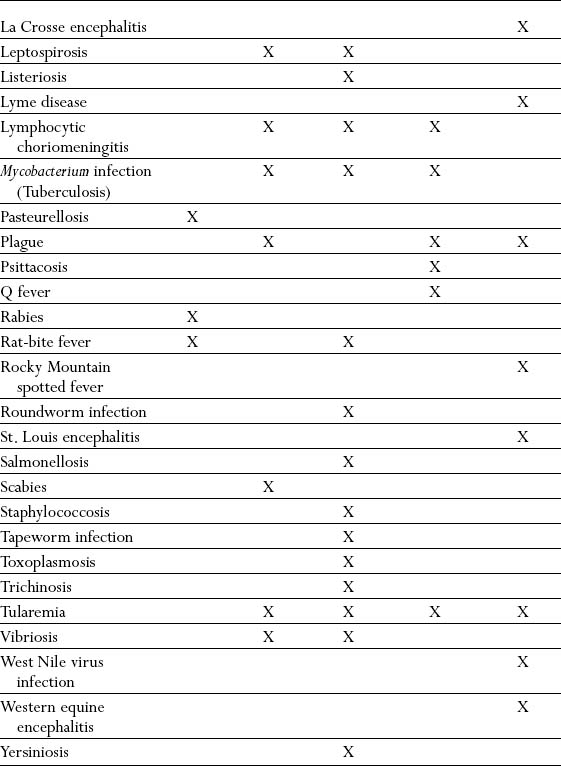MODES OF TRANSMISSION
There are a number of methods used to transmit diseases from animals to people. The two major categories of transmission are direct transmission and indirect transmission (Table 1).
DIRECT TRANSMISSION
Contact between the infected animal and the susceptible person can result in direct transmission of a zoonotic disease. This can take place by touching the animal or from droplet infection through the animal’s coughing or sneezing. A person must be within 1 meter in front of an animal for direct droplet transmission to occur. The pathogen may stay on the person’s skin, enter the body through breaks in the skin or mucosal surfaces, be ingested, or be inhaled. Plague is an example of a disease contracted via direct transmission.
INDIRECT TRANSMISSION
• Transmission that involves contact between the person and some inanimate object known as a fomite. Animals contaminate objects with pathogens, and people become infected when they come in contact with the contaminated objects. One example is dermatophytes, fungi that cause skin infections that can be transmitted to people via contact with contaminated bedding, grooming tools, etc. Another example is dust particles contaminated with a pathogen that can enter a person through the respiratory tract, such as with Hantavirus infection. As with direct transmission, any pathogen acquired through indirect transmission may stay on the person’s skin, enter the body through breaks in the skin or mucosal surfaces, be ingested, or be inhaled. Examples of fomites include grooming utensils, blankets, clothing, toys, and dust particles.
Stay updated, free articles. Join our Telegram channel

Full access? Get Clinical Tree




